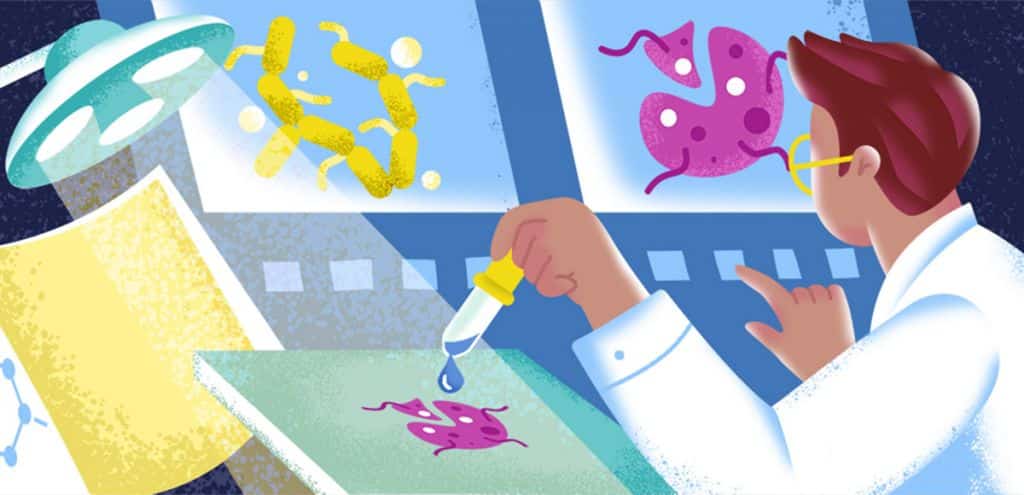Researchers have been using DNA testing technology to detect traces of the SARS-CoV-2 virus behind Covid-19 in wastewater streams in order to predict and prevent outbreaks locally.
Wastewater testing can be a useful method to study the behavior of people living in a specific region. For example, a European study conducted back in 2014 looked at the presence of illicit drugs in wastewater, providing insights on when and how often different substances are used.
As the pandemic hit cities globally, local authorities across the world stepped into action with different strategies to control the spread of the virus. These included contact tracing, targeted lockdowns, and mandatory quarantines, among others. Unlike all of these strategies that chase the spread of the virus, sewage testing allows scientists to predict infection hotspots in advance. This is because infected people can shed the virus in feces a few days before symptoms occur — if they occur at all.
Finding viruses in wastewater
The process of finding SARS-CoV-2 in wastewater far exceeds the proverbial challenge of finding a needle in a haystack. If you weighed all the SARS-CoV-2 viruses inside infected individuals globally, they would total around 1kg. Only a fraction of this ends up in wastewater, of which millions of cubic meters make their way to treatment plants. For wastewater surveillance to be effective in predicting regional outbreaks, authorities need to detect the virus when only a few people are shedding it, making the task even more daunting.
Luckily, the biotech industry has a toolbox for this task. This includes different virus concentration techniques originally developed to detect enteric viruses — the most common cause of gastroenteritis worldwide — in wastewater. Among other technologies, companies and research groups are using electronegative membrane-direct RNA extraction, ultrafiltration, ultracentrifugation, and polyethylene glycol precipitation to extract the genetic material of SARS-CoV-2 from untreated wastewater.
Responding to the widespread interest in sewage epidemiology, global manufacturers of molecular assays, such as Qiagen, Thermo Fisher Scientific, and Promega, have added coronavirus wastewater testing kits to their portfolios. Promega offers a high-throughput kit that uses magnetic beads to extract genetic material from the sample.
“The whole process takes less than two hours and is scalable and adaptable,” Agnieszka Dobrogowski, Product Manager at Promega, told me.
Quantifying the virus
After the presence of the virus in a wastewater sample is confirmed, the next step is to amplify the nucleic content for quantification. This step can be carried out using quantitative PCR — a version of the PCR technique also used in diagnostic Covid-19 tests. While this technology is well established, it often doesn’t provide the sensitivity required to accurately quantify low amounts of DNA.
French biotech C4Diagnostics develops in-vitro diagnostic tests for infectious diseases. After demonstrating early detection of SARS-CoV-2 in wastewaters of nursing homes in France, the startup is now partnering with companies and local authorities to monitor the virus in their wastewaters.
“In a building of 100 people, it takes only one to be infected by the virus to detect a positive signal in wastewater. That is how sensitive the technology is,” said Younes Lazrak, CEO and co-founder of C4Diagnostics. “With that information in hand, you can then trace back who is contaminated with individual testing and take appropriate measures to avoid virus dissemination.”
“We participated in a major surveillance campaign in France, from September to October 2020, where, weekly, we tested the wastewaters of 78 nursing homes for the elderly. This study showed that the detection of SARS-CoV-2 in wastewater is a forewarning of future Covid-19 outbreaks and enables the implementation of a targeted prevention strategy.”
The last piece of the puzzle is to estimate the scale of infected individuals in a region from the amount of virus in wastewater samples. Silvia Bofill-Mas is a virologist at the University of Barcelona who has been tracking viruses in wastewater for nearly two decades, and is now part of the Catalan Surveillance Network of SARS-CoV-2 in Sewage. Her research team noticed a strong correlation between the daily loads of the virus and the number of cases in the region one week after sampling.
In order to ensure that their measurements are accurate, the team uses other viruses as a control.
“The best way is to add to your sample a virus you know and try to detect it at the end of the process to make sure you did it all right. You should add a virus as similar to SARS-CoV-2 as possible since the virus structure is going to influence the efficiency you recover them at from the environment,” Bofill-Mas explains.
“Since SARS-CoV-2 is an enveloped virus you should work with an enveloped surrogate as similar as possible to SARS-CoV-2, preferably an animal or a bacterial virus that can be easily manipulated in the laboratory.”
A challenge in quantification is that it is not yet known if and how the wastewater properties and sewer conditions affect the virus’ survival. In addition, there is no reason to believe that all patients shed similar amounts of the virus in feces. However, this variability is a concern only when there are very few cases. As the number of cases rises, the variation averages out. And while the exact number of infected people cannot be estimated safely, the detection of increasing levels of SARS-CoV-2 still allows scientists to predict local infection hotspots.
As Europe faces fresh concerns due to the rapid spread of the delta variant, which is fast becoming the dominant variant in many countries, the sewage epidemiology measures put in place over the last year could help to predict and prevent waves of infections.
“What is more important, this technology tells us about not just people with clinical symptoms, but also about asymptomatic people. Also, it can be useful to study which are the prevalent variants within a population in a single analysis without having to perform individual testing,” said Bofill-Mas.





